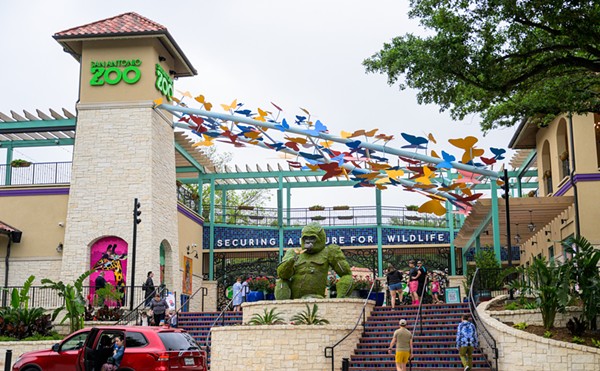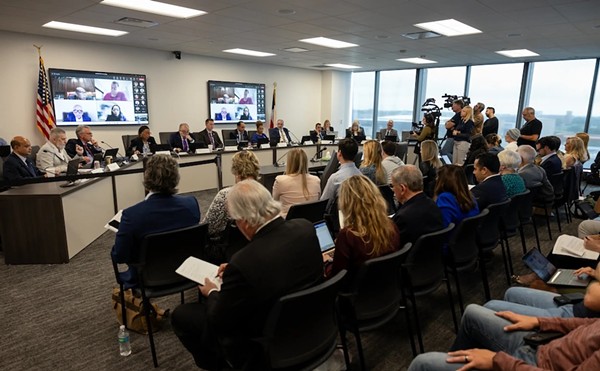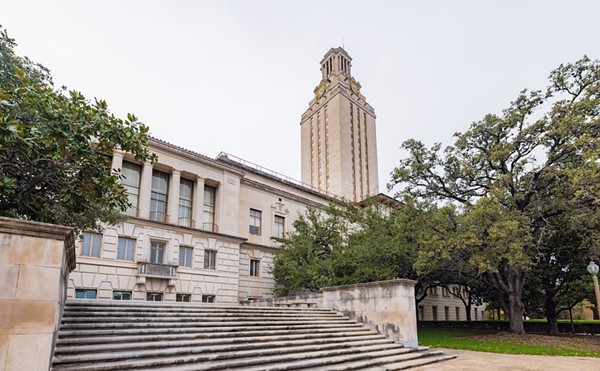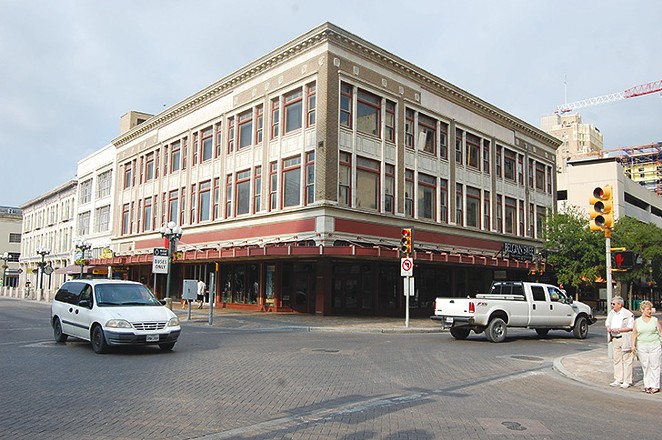
His pledge came after he replaced Councilman Roberto Treviño as tri-chair of the Alamo Citizens Advisory Committee and on the Alamo Management Committee with Councilwoman Rebecca Viagran, and added two Black champions of civil rights history to the Advisory Committee.
“We are going to ensure that the Woolworth and Crockett Buildings remain, that they're not demolished in the plan that moves forward, and that we also retain the openness and civic nature of the plaza,” Nirenberg said at the end of his nightly COVID-19 briefing on Monday, March 1. He also said streets around the Alamo would stay open. “If there is no museum being built, there's no reason to close the roads right now."
The previous plan to remake Alamo Plaza drew a remarkably diverse array of critics. Conservationists and civil-rights groups condemned the plan to put a museum in place of the 100-year-old Woolworth Building, which in March 1960 became the first in the South to peacefully desegregate its lunch counter.
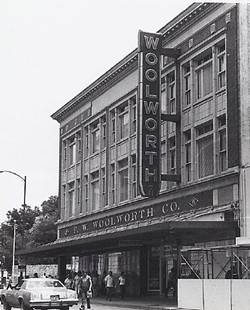
The $450 million project was neutered last September when the Texas Historical Commission voted 12-2 against issuing a permit to move the Cenotaph.
Bexar County Judge Nelson Wolff, who hosted a day-long symposium a year ago on the Woolworth Building’s importance as an historic civil rights landmark, thanked Nirenberg during the COVID briefing for preserving the buildings and the civic space.
“Mayor, I thank you for speaking up about the heritage of the buildings that we've got there, Kress and Woolworth, and keeping the plaza where people can walk and get through,” Wolff said. “I think that's extremely important. Thank you for taking that position.”
Aaronetta Pierce, tapped by Nirenberg to be a new tri-chair of the Advisory Committee, hailed the mayor’s pledge to preserve the Woolworth Building and the civil rights history.
“I believe that the commitment from the mayor is powerful,” she said, acknowledging it was “certainly one of the reasons” she accepted the post.
Pierce, an African American arts advocate and civic leader, has served for the past year on the San Antonio Conservation Society's Coalition to Save the Woolworth Building. The building at the corner of East Houston and Alamo Streets opened in 1921 as the F. W. Woolworth 5-10 and 15 cent store.
“This adds another layer to the power of the Plaza,” Pierce said. “It adds another opportunity to tell another story of history - the history of the civil rights movement and the sit-ins.”
Carey Latimore, who Nirenberg also appointed to the 26-member Advisory Committee, is an associate professor of history at Trinity University who teaches African American studies. Last October, the Alamo Trust published Latimore’s study, commissioned by the city, on the history of desegregation in San Antonio.
Nirenberg said he appointed Viagran, a descendent of an Alamo defender, because she “has been a leader in the World Heritage designation for our community” and because of her “unwavering commitment to telling the entire story of the site.”
Treviño, who has been a key leader in the Alamo project, said in a written statement that he is “disappointed to be removed” from the Alamo Management and Advisory Committees. He added that the masterplan has “disintegrated,” and that he believes the city should pull out of the lease with the General Land Office and reallocate its $38 million commitment to other, more pressing needs.
Asked by a reporter about Treviño’s comments at that evening’s briefing, Nirenberg was blunt.
“Unfortunately the position that Councilman Treviño has taken — which is, that if the Cenotaph can't move, then the Alamo Plan is dead — is not tenable. It's not gonna move,” Nirenberg said. “So we have to redesign the plan around that reality, and that's what we're going to do.”
Treviño had also declined to give in to a mounting drumbeat from the community and from political leaders including Wolff to save the Woolworth Building. Instead, according to this Alamo Trust article, he favored creating a stand-alone civil rights institute in the Kress Builiding, four blocks away on Houston Street.
Although he co-authored a 2018 op-ed in the San Antonio Express-News with Nirenberg and Wolff titled, “Alamo Plaza Must Remain a Public Space,” the plan Treviño backed would have restricted public access.
In a March 1 memo to City Council, Nirenberg wrote that the committee replacements, appointments and steps toward a redesigned Alamo plan came after his discussions with Texas General Land Office Commissioner George P. Bush. Bush and Nirenberg are the Executive Committee over the Alamo project.
Nirenberg's memo said the modified plan “must consider key issues raised by our community,” including “repurposing the Woolworth and Crockett buildings,” street closures and public access to Alamo Plaza.
Nirenberg’s memo said the modified plan will “amend the project management structure and funding responsibility for each party.”
The memo said the parties have “conceptually discussed” that:
- San Antonio will be responsible for the design and construction of Alamo Plaza and the improvements to Crockett and Bonham Street.
- The General Land Office will be responsible for the design and restoration of the Church and Long Barracks and the design and construction of other improvements to the Alamo grounds.
- The Alamo Trust will be responsible for the design and construction of a world class museum and any improvements to Alamo Street, Houston Street and the Paseo del Alamo that are necessary to integrate the museum into the Alamo Plaza.
He said the public will have an opportunity to provide feedback on the changes before city council votes on a new agreement some time in the next few months.
This article was first published by NowCastSA, a nonpartisan, nonprofit news organization informing and engaging people about public policy, health, the environment, education and culture.
So many restaurants, so little time. Find out the latest San Antonio dining news with our Flavor Friday Newsletter.







